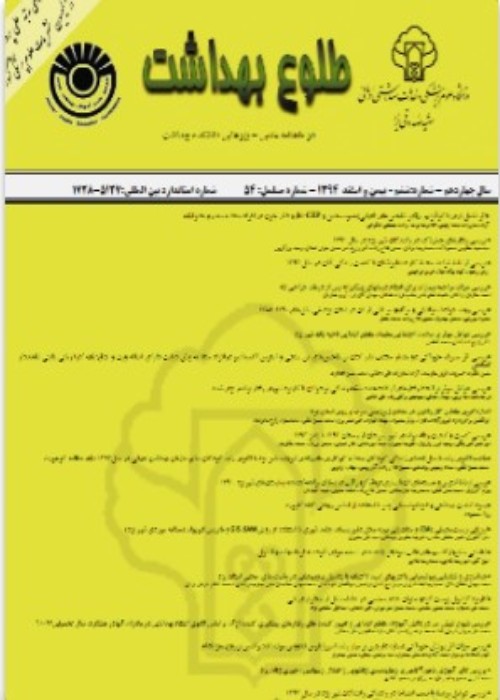Comparative Investigation of 2-Chlorophenol and 4-Chrorophenol Removal Using Granulated Activated Carbon and Rice Husk Ash
Author(s):
Abstract:
Background
Industrial wastewaters contain organic pollutant such as dyes, halogenated hydrocarbon, phenolic compounds and so on Rice husk is a cheap material which is new available in our country. The aim of this study is removal efficiency comparing rice husk ash performance with commercial granulated activated carbon in removal of 2-CP and 4-CP from aqueous solutions. Methods
Experiments were carried out in dual laboratory-bench scale to evaluate the effect of f actors including adsorbent dosage, pH, equilibration time and phenolic compound concentration regarding the effect of selected pollutant adsorption for removing this phenolic compound and comparing these methods. Spectrophotometeric measurements were carried on in wave lengths of 274 and 280 nm for 2-chlorophenol and 4-chlorophenol respectively. The adsorption parameters were determined using both of isotherm and kinetic models. Results
The Results showed that the activated carbon efficiency for selected compounds was rather more than rice husk ash. However rice huck ash (RHA) efficiency for these compounds was comparable with activated carbon. It was shown that a rapid equilibration could be achieved at pHs as low as 5 and 7 for RHA and GAC, respectively. The adsorption efficiency decreased with increasing the initial phenolic concentration and decreased with decreasing the adsorbent dosage. The adsorption isotherm studies clearly indicated that the adsorption process is on surface of RHA and fits into the Freundlich model. Also GAC adsorption isotherm for 2-Chorophenol fit into the Langmuir isotherm and for 4-chlorophenol fit into Freundlich model. The applicability of Ritchie, pseudo first order and pseudo secound order kinetic model was also been investigated. It was indicated that both methods were correlated with pesoudo secound order kinethic model. Conclusion
Activated carbon and RHA exhibit reasonable adsorption capacity for the phenolic compounds and as to the results, RHA was found to be a useful agricultural waste product for the removal of some phenolic compounds.Keywords:
Language:
Persian
Published:
Tolooe Behdasht, Volume:11 Issue: 3, 2013
Page:
66
magiran.com/p1095872
دانلود و مطالعه متن این مقاله با یکی از روشهای زیر امکان پذیر است:
اشتراک شخصی
با عضویت و پرداخت آنلاین حق اشتراک یکساله به مبلغ 1,390,000ريال میتوانید 70 عنوان مطلب دانلود کنید!
اشتراک سازمانی
به کتابخانه دانشگاه یا محل کار خود پیشنهاد کنید تا اشتراک سازمانی این پایگاه را برای دسترسی نامحدود همه کاربران به متن مطالب تهیه نمایند!
توجه!
- حق عضویت دریافتی صرف حمایت از نشریات عضو و نگهداری، تکمیل و توسعه مگیران میشود.
- پرداخت حق اشتراک و دانلود مقالات اجازه بازنشر آن در سایر رسانههای چاپی و دیجیتال را به کاربر نمیدهد.
In order to view content subscription is required
Personal subscription
Subscribe magiran.com for 70 € euros via PayPal and download 70 articles during a year.
Organization subscription
Please contact us to subscribe your university or library for unlimited access!



